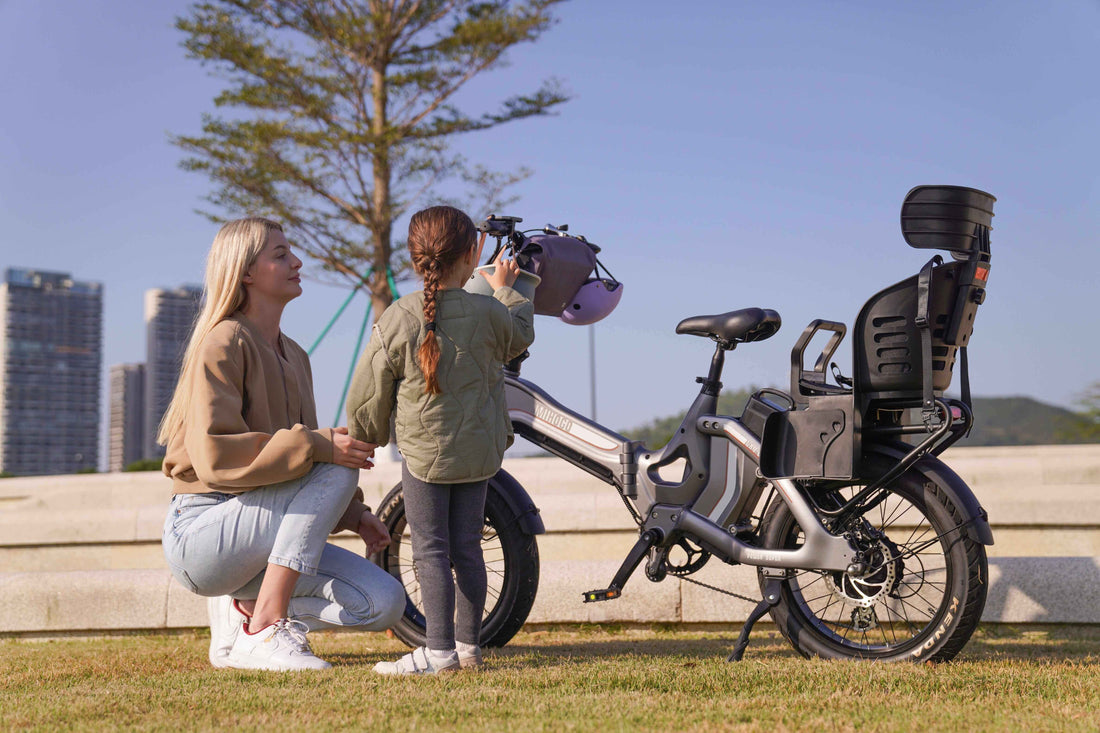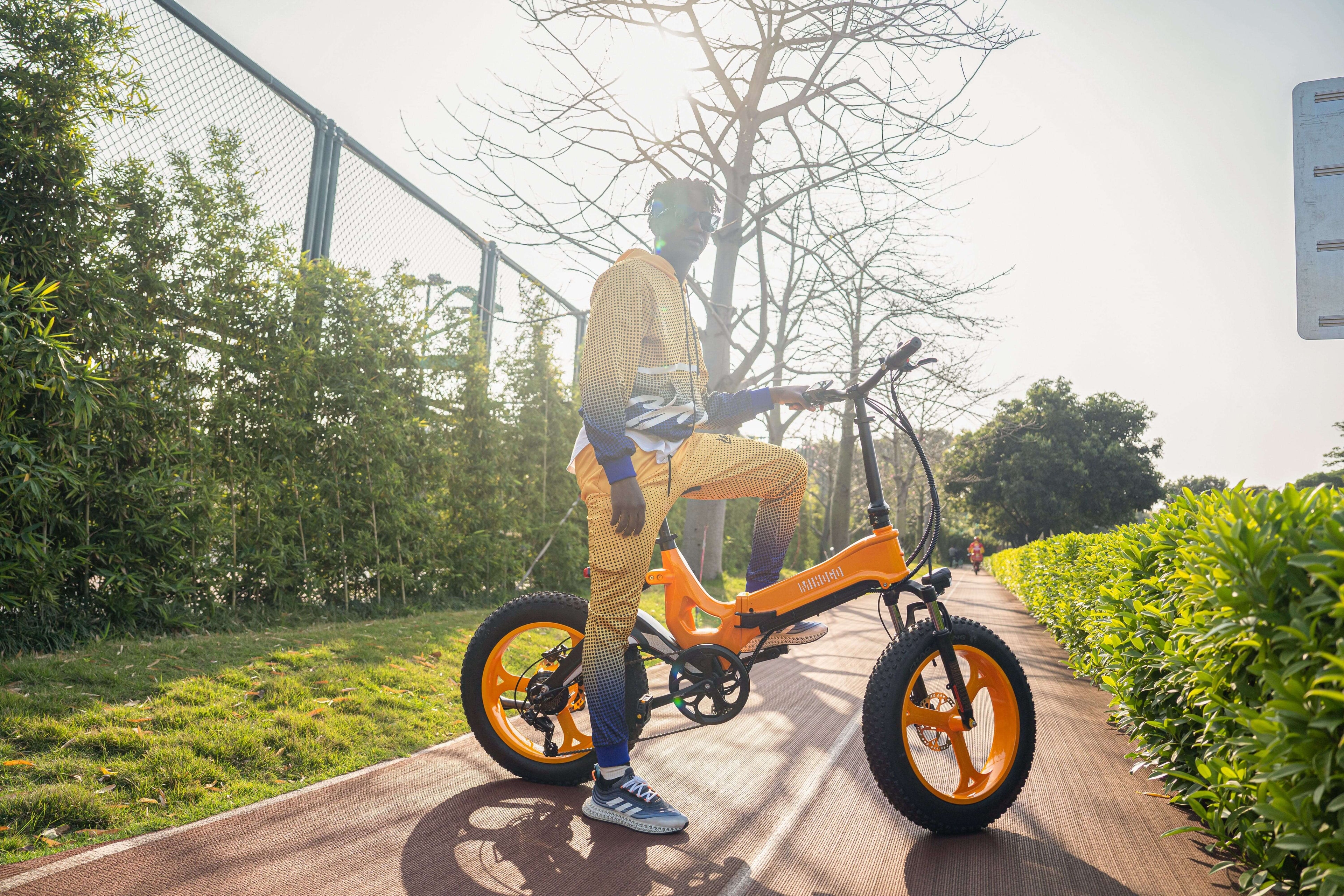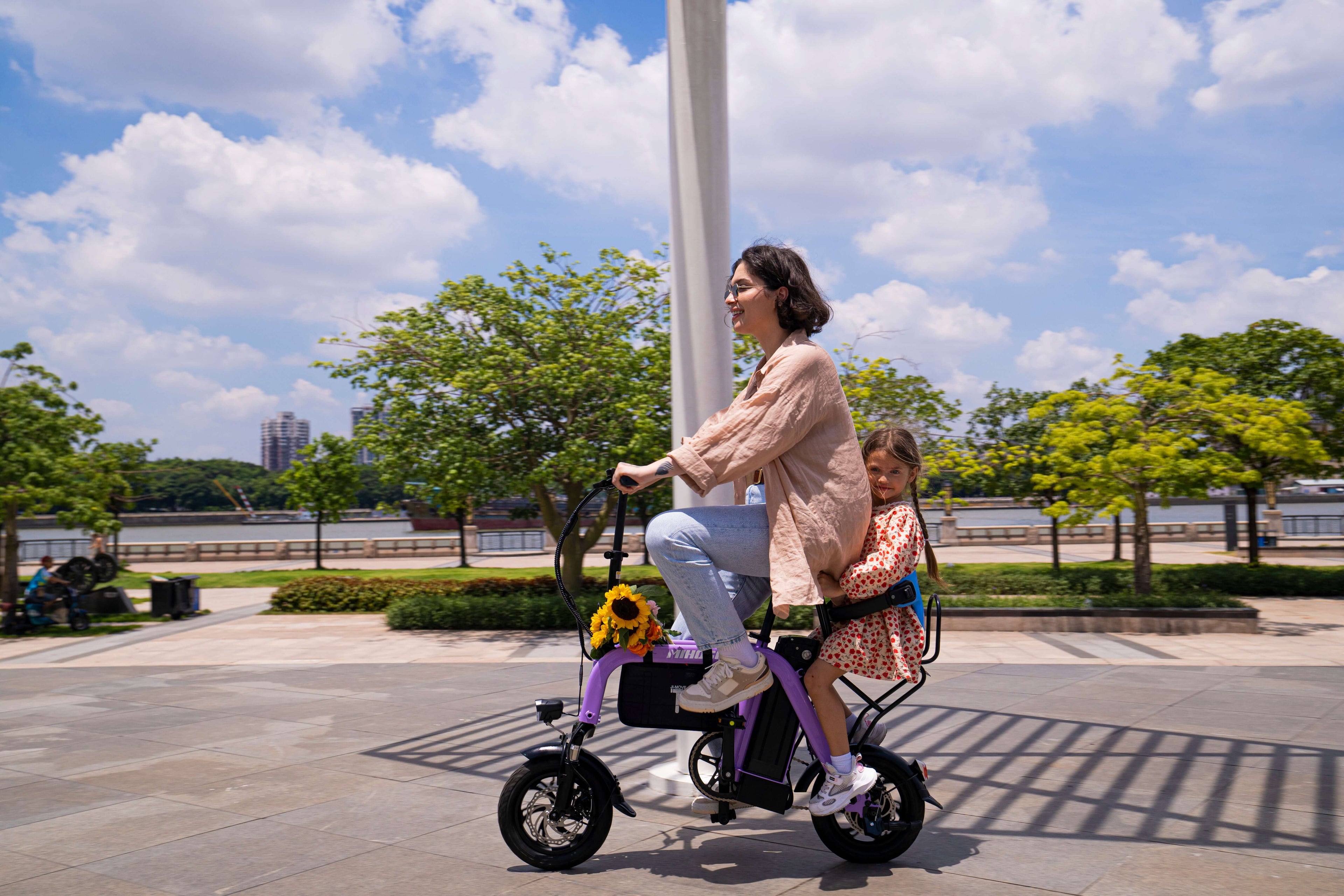Understanding E-Bike Weight Capacity: The Basics
E-bike payload capacity refers to the maximum total weight your electric bike can safely support, including the rider, cargo, accessories, and any additional equipment. This specification isn't just a suggestion—it's a critical safety parameter that affects your bike's performance, durability, and your overall riding experience.
Most standard e-bikes have weight capacities ranging from 220 to 300 pounds, but specialized models can support significantly more. Electric bikes typically have weight limits between 220 and 300 pounds, with some specialized models like cargo e-bikes reaching up to 350 pounds or more.
What's Included in Weight Capacity
Your e-bike's maximum load capacity includes:
- Rider's body weight (including clothing, helmet, and gear)
- Any cargo or groceries
- Accessories like panniers, baskets, or child seats
- Additional equipment such as water bottles and tools
Mihogo E-Bike Models: Payload Specifications
At Mihogo, we engineer our electric bikes with varying weight capacities to meet different rider needs. Here's a detailed breakdown of our current lineup:
Mihogo Air750 Max - Carbon Fiber Performance
The Air750 Max represents our premium carbon fiber e-bike designed for riders between 5'7" and 6'10". With its lightweight yet robust carbon fiber construction, this 750W motor-powered bike offers exceptional strength-to-weight ratio. The carbon fiber frame provides excellent load distribution while maintaining the bike's agility and performance across its impressive 121-mile range.
MIHOGO ONE Utility EBIKE - Heavy-Duty Workhorse
Our ONE Utility model is specifically designed for maximum versatility and load-carrying capability. Accommodating riders from 5'7" to 6'10", this utility e-bike features a reinforced frame designed to handle substantial payload while maintaining its 167-mile range. The 750W motor provides ample power for cargo hauling and family transportation, making it ideal for those who need serious carrying capacity.
MIHOGO RX 2.4 - Compact Folding Solution
The RX 2.4 folding e-bike offers a practical weight capacity solution for riders between 5'3" and 6'5". Despite its compact, foldable design, this commuter-focused model maintains structural integrity with its 500W motor system. The folding mechanism doesn't compromise the bike's ability to handle rider weight and light cargo across its 40-mile range.
Mihogo Mini - Lightweight Urban Mobility
Our Mini model caters to riders from 5'1" to 6'4", offering an efficient 350W motor with a 62-mile range. While designed for urban mobility and lighter loads, the Mini maintains appropriate weight capacity standards for safe city commuting and recreational riding.
Why E-Bike Weight Limits Matter
Safety Considerations
Exceeding your e-bike's weight capacity can compromise critical safety systems. Excess weight easily wears down and damages the braking system, putting riders at risk. The braking distance increases significantly when weight limits are exceeded, potentially leading to dangerous situations.
Performance Impact
Battery life and motor efficiency are directly affected by payload. Heavier loads require more power from the motor, reducing your e-bike's range and potentially causing the motor to overheat. Overloading can lead to instability, making the electric bicycle harder to control and increasing the risk of accidents.
Component Longevity
Structural components like wheels, spokes, frames, and suspension systems experience accelerated wear when weight limits are exceeded. Exceeding a bike's weight limit will put its structural components under more strain than it was designed to handle.
Factors That Determine E-Bike Weight Capacity
Frame Materials and Construction
The choice of frame material significantly impacts weight capacity. Steel frames typically offer higher weight limits due to their strength, while carbon fiber frames like our Air750 Max balance strength with lightweight performance. Aluminum frames provide a middle ground between weight and capacity.
Wheel and Tire Specifications
Wheel strength and tire design play crucial roles in weight capacity. Bikes with thicker spokes, wider rims, and more rigid tires tend to accommodate heavier loads better. The Mihogo models feature appropriately sized wheels and tires matched to their intended payload capacities.
Motor Power and Torque
Higher wattage motors like the 750W systems in our Air750 Max and ONE Utility models provide better performance under load. More torque ensures the bike maintains performance even when carrying substantial weight up hills or during acceleration.
Choosing the Right E-Bike for Your Weight Requirements
Assess Your Total Payload Needs
Calculate your body weight plus any regular cargo you'll carry. Add 20-30 pounds as a safety buffer to account for clothing, accessories, and unexpected items. This total should be well below your chosen e-bike's maximum capacity.
Consider Your Riding Terrain
Hill climbing with heavy loads requires more motor power and robust construction. If you regularly ride in hilly areas or plan to carry significant cargo, models like our ONE Utility with 750W motors provide the necessary power reserves.
Think About Future Needs
Consider whether you might need to carry more weight in the future. Choosing an e-bike with higher capacity than your current needs provides flexibility for electric bike accessories, cargo additions, or family riding scenarios.
Best Practices for E-Bike Load Management
Proper Weight Distribution
Distribute weight evenly across your e-bike. Use rear racks for heavier items and keep the center of gravity low. Avoid hanging heavy bags from handlebars, which can affect steering and stability.
Regular Maintenance Checks
Tire pressure management becomes even more critical with heavier loads. Check tire pressure regularly and ensure it meets manufacturer specifications. Inspect brakes, spokes, and frame joints more frequently when operating near weight capacity.
Loading Techniques
When carrying cargo, secure all items properly to prevent shifting during rides. Use appropriate cargo accessories designed for your specific Mihogo model to ensure safe load distribution.
E-Bike Weight Capacity Trends in 2025
The e-bike industry continues to evolve, with manufacturers focusing on higher payload capacities without sacrificing performance. Recent models are achieving payload capacities of 560 pounds or more, though such extreme capacities come with trade-offs in agility and efficiency.
Smart weight management systems are emerging as a trend, with some e-bikes featuring sensors that adjust motor assistance based on total load. This technology optimizes battery life and performance regardless of payload variations.
Conclusion: Making the Right Choice
Understanding e-bike weight capacity is crucial for safe, enjoyable riding. Whether you choose the high-performance Air750 Max, the versatile ONE Utility, the practical RX 2.4, or the efficient Mini, each Mihogo model is engineered to provide reliable performance within its specified weight limits.
Remember that weight capacity isn't just about the numbers—it's about matching your specific needs with the right e-bike design. Consider your body weight, typical cargo requirements, riding terrain, and future needs when making your selection.
For detailed specifications and to explore our complete range of electric bikes, visit our e-bike collection or learn more about [e-bike maintenance tips] to keep your Mihogo performing optimally regardless of load.
Ready to find your perfect weight-capacity match? Explore the Mihogo lineup today and discover how our engineered solutions can handle your specific payload requirements while delivering the performance and reliability you deserve.
[Mihogo E-Bike Maintenance Guide] - Future blog post about maintaining e-bikes under various load conditions








